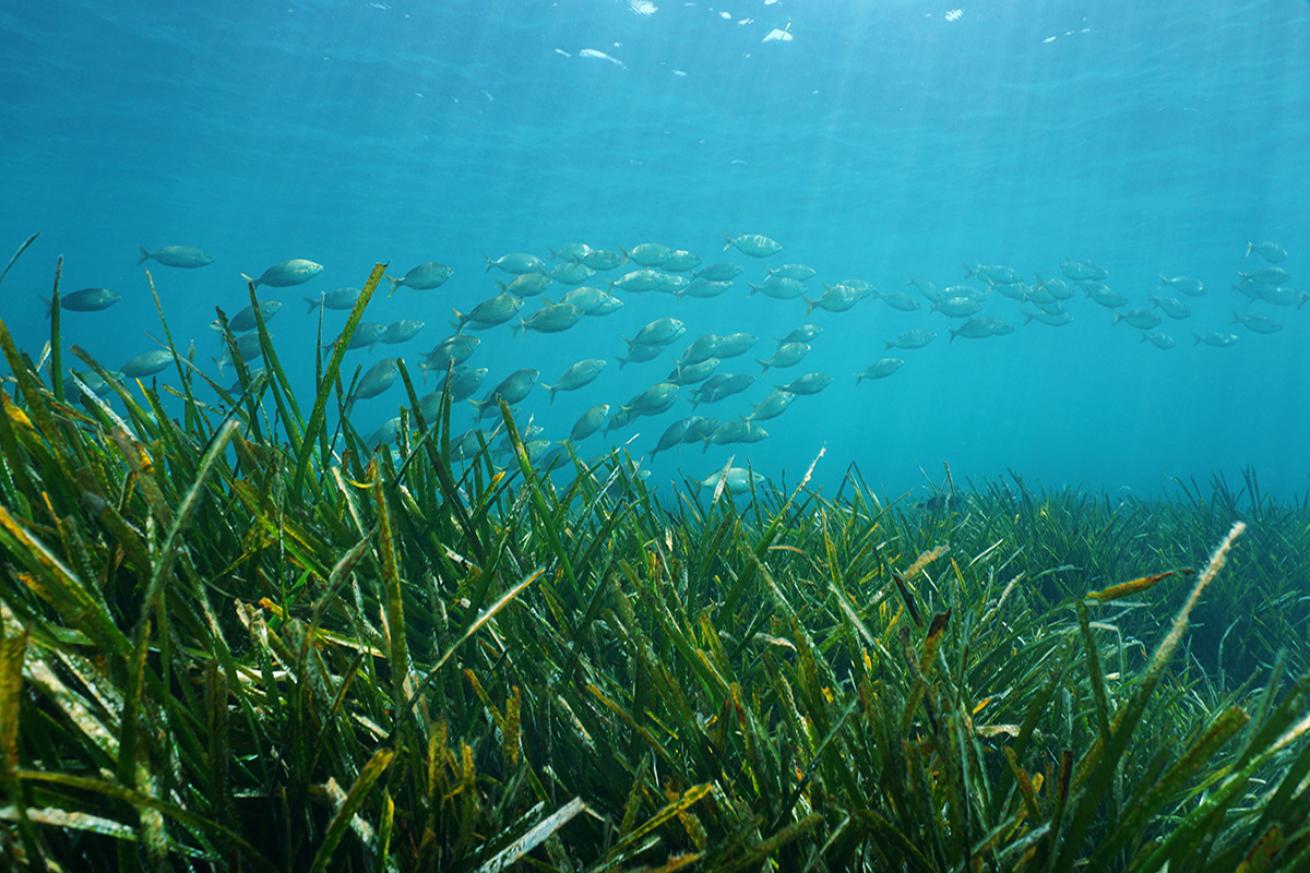U.K. Divers Plant Five Acres of Seagrass Seeds to Restore Vital Habitats

Shutterstock.com/DamseaSeagrass is an important marine habitat that sequesters CO2.
Divers in Dale Bay, Wales, have planted what will grow to become five acres of seagrass habitat. The effort is part of a broader program led by U.K.-based nonprofit Project Seagrass that aims to monitor and restore seagrass beds worldwide.
“We are essentially doing underwater gardening,” Richard Lilley, director and co-founder of Project Seagrass, tells Mongabay about their summer initiative.
Seagrass beds are not only vital to the ocean ecosystem as a key habitat for fish and invertebrates, but they’re also important to overall health of the planet: They sequester large amounts of the carbon that leads to climate change. Additionally, these aquatic plants have myriad economic benefits, providing livelihoods and food for coastal communities and supporting global fisheries and tourism by acting a nursery for commercially significant fish.
There are currently more than 70 known species of seagrass, which cover over 300,000 square kilometers of the ocean floor. But due to anthropogenic threats like overfishing, coastal development and runoff pollution, many seagrass beds have been depleted to the point of no return.
In fact, according to the Intergovernmental Science-Policy Platform on Biodiversity and Ecosystem Services, global seagrass beds decreased by over 10 percent each decade between 1970 and 2000.
Planting new seagrass beds is seen as an effective restoration solution, and several initiatives worldwide are underway to repopulate seagrass meadows. These include the ongoing efforts in Wales as well as a success story in Virginia.
In 1997, residents of Virginia’s Chesapeake Bay area found patches of seagrass that had bounced back after a mold slime disease and hurricane wiped them out more than 60 years earlier.
This sparked an ongoing effort by the Virginia Institute of Marine Science and the University of Virginia to repopulate seagrass beds in smaller neighboring bays.
“Every year from 2001 through today, we would harvest the seeds from Chesapeake Bay, and then let nature do the rest,” Robert J. Orth, a professor at the Virginia Institute of Marine Science, tells Mongabay.
The results came quickly, and the beds have only continued to flourish, eventually starting to spread naturally.
“In 2004 we started seeing the actual spread,” Orth says. “Over the years probably we placed well over 70 million seeds.”
How much eelgrass have those seeds produces? About 10,000 acres worth, which is now also filled with species like anchovies, silversides, pinfish and blue crabs that have returned to the area.
In the U.K., research shows at least 44 percent of seagrasses have disappeared since 1936, and 39 percent of that depletion has come since the 1980s. Of the remaining seagrass ecosystems, up to 92 percent are estimated to be degraded.
“When there is so little of it left, it can’t reach the threshold it needs to begin to self-recover,” Lilley says.
So this summer, as the local seagrass species, Zostera marina (known as eelgrass), started producing seeds, a team of divers with Project Seagrass dipped into Dale Bay to carefully collect the seed pods for manual restoration.
“We ended up with half a million seeds,” Lilley says.
After collection, the seeds were grouped in hessian bags and fixed to ropes on the seafloor at 1-meter intervals. Over the next seven to 10 years, the seagrass seeds will grow to form one cohesive bed totaling about 5 acres.
“By putting the seagrass there, you can completely change the ecosystem,” Lilley says.
Next up, the team will tackle a site in north Wales, and Lilley says the hope is to continue restoration efforts in other areas of the U.K., creating a network of seagrass beds for marine animals to utilize.
“We talk about habitat connectivity and wildlife corridors on land,” Lilley says. “It’s the same thing in the sea.”










